Audio vs MIDI
A Soft Synced Companion Guide
Soft Synced Environment → Beginner Track → The Basics Course → Lesson 9
Introduction
Modern production runs on two distinct types of musical data: audio and MIDI. Understanding how they differ, and how they complement each other, is fundamental. Audio captures a performance as sound itself. MIDI captures instructions for how a performance should be played. Knowing when to use each gives you control over both authenticity and flexibility in your workflow.
Core Concepts
Audio = Recorded Sound
Audio files are digital representations of actual sound waves. They’re like sonic photographs: once captured, the performance is locked in. You can stretch or correct it with tools like flex time or pitch editing, but the essence remains a frozen performance. Audio excels at capturing the nuances of real instruments, vocals, and ambience.
MIDI = Performance Data
MIDI doesn’t contain sound. Instead, it’s a series of instructions: which note to play, how long to hold it, and how hard to strike it. A virtual instrument or sampler interprets those instructions. MIDI is small in size, endlessly editable, and can be reassigned to any instrument. This makes it the most flexible format for composition and experimentation.
Advantages and Trade-Offs
Audio: natural feel, unique timbres, room sound. Large files, harder to edit deeply.
MIDI: light files, editable timing/pitch, instant instrument swaps. Can feel mechanical unless humanized.
Hybrid Workflow
Many producers sketch ideas in MIDI for flexibility, then commit parts to audio once they’re confident in the sound. This hybrid approach combines editing power with the sonic realism of recorded audio.
Producer FAQs
-
Because MIDI gives you freedom at the writing stage. You can change key, tempo, or even the instrument itself without re-recording. For sketching and experimentation, MIDI is unmatched. Audio, on the other hand, captures realism like the breath of a vocal or the resonance of a guitar string. In practice, you’ll often start with MIDI and finalize as audio when you’re satisfied with the sound.
-
You could, but you’d miss out on the richness of real performances. Virtual instruments have advanced, but they still rely on samples or synthesis. A MIDI piano may sound convincing, but a recorded acoustic piano carries unique overtones and imperfections that no plugin fully replicates. Working entirely in MIDI risks sterility; blending with audio adds depth.
-
Commit when you’re confident in both the instrument sound and the performance. Converting to audio locks in those choices, but also frees up CPU power and ensures consistency across systems. Many producers wait until mixdown to print final audio, but committing earlier can help you stop second-guessing and focus on arrangement.
-
Hybrid is standard practice. Professionals write with MIDI for flexibility, but they know clients, collaborators, or mastering engineers need audio stems. A balanced workflow keeps creative options open during writing while delivering reliable audio at the end. This dual approach is one of the marks of a polished production process.
Quick Reference
Audio
Frozen performance • Captures realism • Large files, harder to reshape deeply.
MIDI
Performance instructions • Infinitely editable • Needs a virtual instrument to create sound.
Hybrid
Write in MIDI • Commit to audio when ready • Combines flexibility with sonic depth.
Next Steps
You now understand the difference between audio and MIDI: one captures sound, the other captures instructions.
Next up: the software tools that extend your DAW and let you shape sound far beyond raw recordings or MIDI notes.
The Guides are your reference. The app is your journey.
